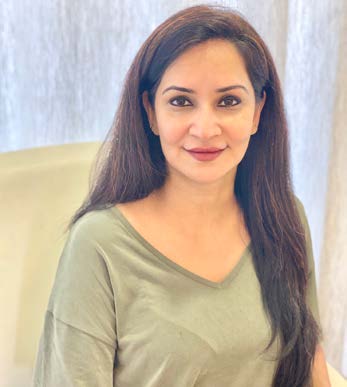Dermatologist
THREAD LIFT

Dr Farida Modi Dermatologist Dermacare 22 years in practice
Dr Farida S Modi has completed her MBBS from the Mumbai University and her MD from Karnataka University. She is one of the pioneer doctors to initiate the use of various fillers, botullinum toxin and third generation absorbable threads in India and conducts training and workshops for the same.
Know more from Dr Modi about thread-lift.
Who is a good candidate for a thread lift?
The ideal indications for a fine thread lift treatment, which includes both fine mono filament threads and the thicker cog threads, are the following: skin rejuvenation; wrinkles, folds and grooves; lifting, firming, contouring and re-shaping; volume reduction of fat, cheeks, submandibular fat, cellulite; and pore size reduction through dermal tightening.The other indications where tightening through threads and thread lift treatment can be applied are: stretch marks; androgenetic alopecia; correction of irregularities after liposuction; acne scars and other atrophic scars; and asymmetry due to facial nerve palsy.
How can best results be derived from this treatment and within what timeframe? Tell us about the technique and the number of sittings required?
Factors that determine the outcome of success in thread lift include: knowledge of topographic anatomy, especially the anatomy of face; consideration of the facial muscle kinetics; knowledge of the pathogenesis of ageing and ptosis of soft tissue; and correct determination of indication.
The thicker cog and cone threads are inserted in the subcutaneous tissue, which helps in anchoring, in tissue adhesion and re-positioning of the layer.This helps in instant suspension and lifting effect.These are layered on top with mono filament fine threads, which are inserted in the hypo-dermis in the same sitting.These are known to generate new collagenous tissues, which improves the skin elasticity and skin tightening.This process starts within three to four weeks and can go up to 10 to 12 weeks.The same procedure can be repeated after three months to better the results if required.The results derived from each treatment is known to last up to 9 to 12 months.
What is the recovery time for a patient and what does the post-treatment care involve?
TThe thread lift procedure is not a surgery but a minimally invasive procedure with low occurrence of complications, fast recoveries and a short procedure time. It is a cosmetic technique to lift and tighten skin tissues using bioabsorbable and antimicrobial filament threads.
The downtime involved in both the contouring cog threads and the tightening mono filament threads is two to three days.This involves minimal bruising and mild pain.
The post treatment care includes: Cold compress; analgesics (acetaminophen, paracetamol, tramadol); antibiotics; diuretics for swelling; it is best to avoid steroids and NSAID’s post procedure.
Any contraindications involved that one should be aware off? Also, is there anything the patient must not do after the treatment?
The contraindications that the physician should be aware of before performing the procedure are: presence of non-absorbable implants (example: silicon) in the zone of treatment area; tendency to form keloids; blood dyscrasias with bleeding tendency; malignancy; body dysmorphia; uncontrolled diabetes; active infection and inflammation in the treatment area; and patient with unrealistic expectations.The patient must avoid any face massages for a minimum period of 7 to 10 days.
What makes thread lifting and tightening an ideal treatment for an ageing Indian face?
Indian faces age differently from a Caucasian face. An Indian face is heavier and ages with more sagging unlike a Caucasian counterpart, which shows crinkling and wrinkling of the skin. Most techniques used for antiageing are targeted towards fibroblast stimulation, which helps in dermal tightening or volume replacement with the help of soft tissue fillers. An Indian face requires more of repositioning of the subcutaneous tissue and lifting and slimming effect.This is what makes it an ideal and satisfying treatment for an ageing Indian face.